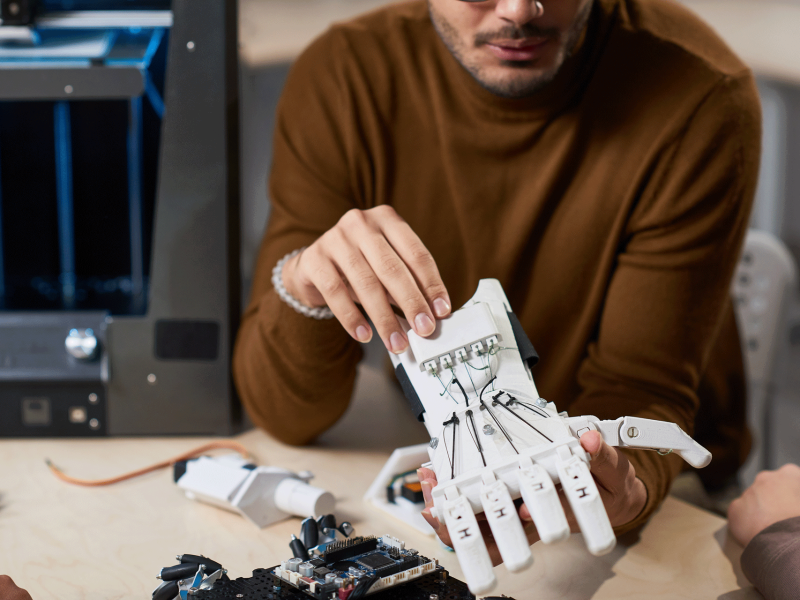Author: Doru Cantemir, Ph.D.
Ludor Engineering – www.ludoreng.com
This article belongs to a series of texts within the project “Inclusive Education: Ensuring Accessibility of Non-Vocational Education for Adults with Disabilities”.
The aim of this text is to raise the awareness of non-formal adult education providers and other interested people about new technologies that can be used to support the needs of persons with disabilities. In this article, by “new technologies” we consider those advanced or new developments within the field of Assistive Technologies (ATs), expressed in specific applications and products. In the literature, these new technologies are also called “emerging technologies”, “advanced assistive technologies” or “emerging assistive technologies”. They are currently in development or at an early stage of market introduction.
ATs are designed to increase, maintain, or improve the functional capabilities of persons with disabilities. Some of them are relatively low-tech, such as such as reading glasses or crutches, while others are much more cutting-edge. Advanced AT are made possible by some underlying technologies, called “enabling technologies”, such as:
- Artificial intelligence (AI)
- Internet if things (IoT)
- Augmented and Virtual Reality (AR/VR)
- Advanced robotics
- 3D printing
- Advanced sensors
- Brain – computer/machine interface
- Autonomous vehicles
- New materials
The rapid development and the increasing availability of enabling technologies is pushing the boundaries of AT as these are more and more integrated into assistive products. New technologies have a huge potential to support the needs of PWDs in many ways. They can help breaking the barriers for PWDs, providing larger access to education, offering customised solutions to countless problems related to education and everyday life activities.
Using one or a combination of several enabling technologies, advanced assistive products can be developed. Some good examples are:
- Smart assistants – based on enabling technologies such as AI, Robotics and IoT.
- Advanced wheelchairs – powered by technologies like AI, Robotics, IoT, Advanced sensors and Autonomous vehicles.
- Smart campus or Smart classroom – feasible thanks to IoT.
- AR Glasses – enabled by AR/VR, AI, IoT and Advanced sensors.
- 3D-printed prosthetics – made possible by the advancements of Additive Manufacturing / 3D printing.
- Educational robots – making use of AI, Robotics, IoT, Advanced sensors, etc.
All these AT products, as well as many other AT solutions based on advanced technologies, can greatly help PWDs around the world.
Given the extent and the ever-changing nature of the technology, the landscape of the advanced assistive products is very dynamic. Those interested need to constantly look for the latest advancements. Fortunately, the Internet and the relevant ERASMUS+ projects are a very good resource of updated information. For example, the project “Inclusive Education: Ensuring Accessibility of Non-Vocational Education for Adults with Disabilities” funded by the European Union’s ERASMUS+ programme is developing several educational materials that include, among other interesting things, information about new technologies used for supporting the needs of persons with disabilities. To learn more about Inclusive Education, AT, universal design and many others, you can follow the project on Facebook at www.facebook.com/IEDAErasmusproject.



